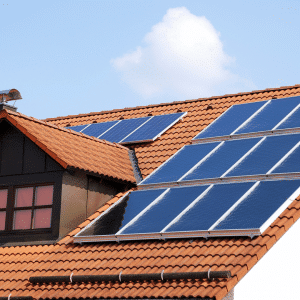Section 3: Using Heat

All heating systems require some source of energy. A long time ago, people burned wood, oil, or candles to generate heat and electricity, but today there are much more efficient methods. Common types include forced-air systems, radiator systems, and electric heating systems. A forced–air system is the most common type used for heating. It uses a furnace to heat the air, and then a fan blows the hot air through the ducts to the rooms throughout a home. A radiator system is a closed metal container that contains hot water or steam, which is transferred to the surrounding air by conduction; this heated air moves through each room and warms it up by convection. Finally, in an electric heating system, coils heated by electricity are placed in floors and walls to heat the surrounding air by conduction.

The sun’s energy can also be used as a supplemental energy source for a home. Two types of systems use the sun’s energy. Passive solar heating is when radiant energy from the sun is transferred to a room through the windows. Active solar heating is a system that uses solar collectors that absorb radiant energy from the sun.
Heat behaves in a predictable way, which has led to the development of specific scientific laws. Thermodynamics studies the relationship between thermal energy, heat, and work. The first law of thermodynamics states that adding heat or doing work increases the energy of a system. The energy decreases if a system does not work or heat is removed. Therefore, energy must be conserved when heat is added to or removed from a system. The second law of thermodynamics states that heat can’t flow from a cool object to a warm object unless work is done. The second law looks at the natural direction in which heat flows.
Review:
- What is a forced-air system?
- What is thermodynamics?
- Explain the first law of thermodynamics.
